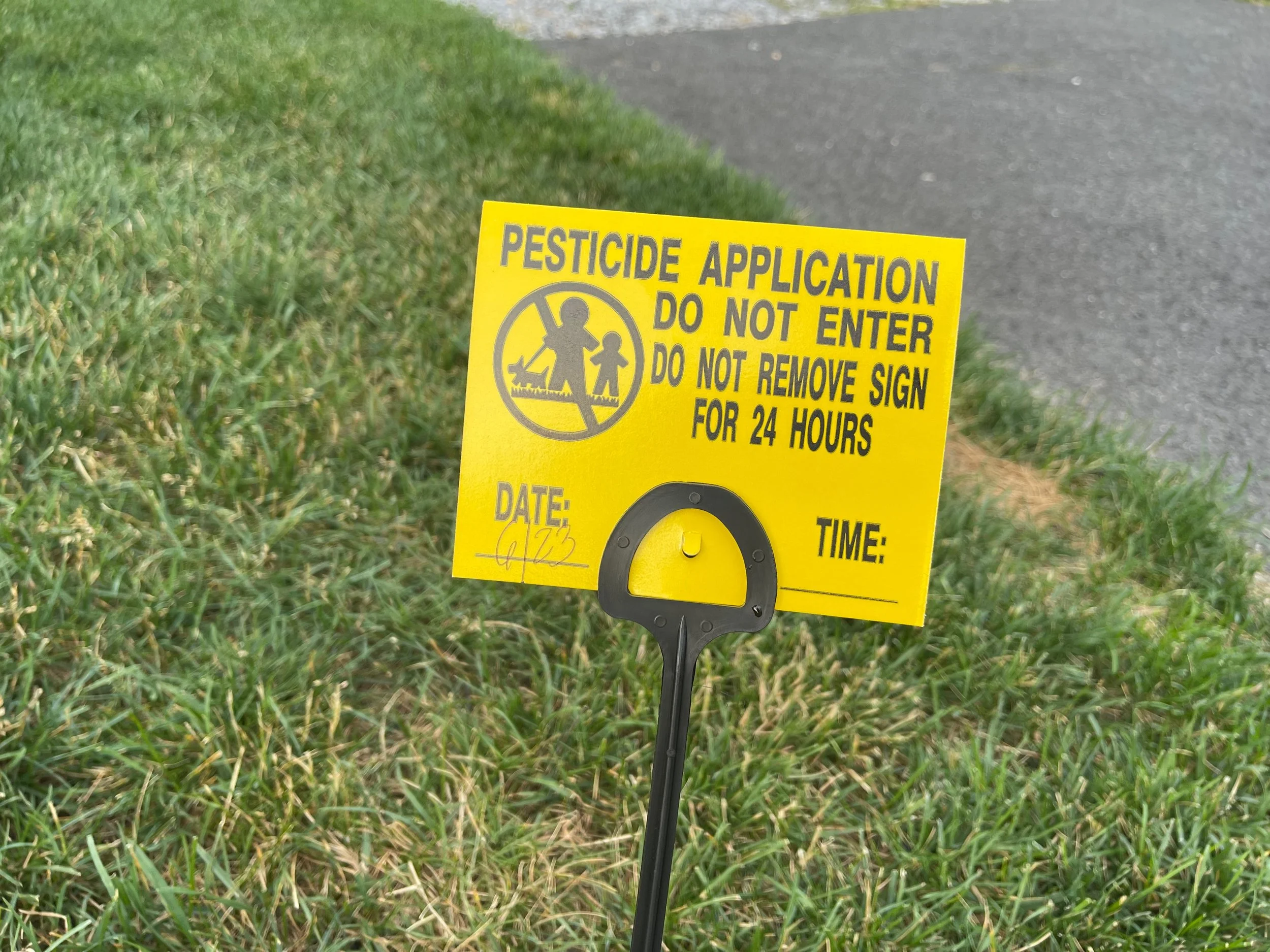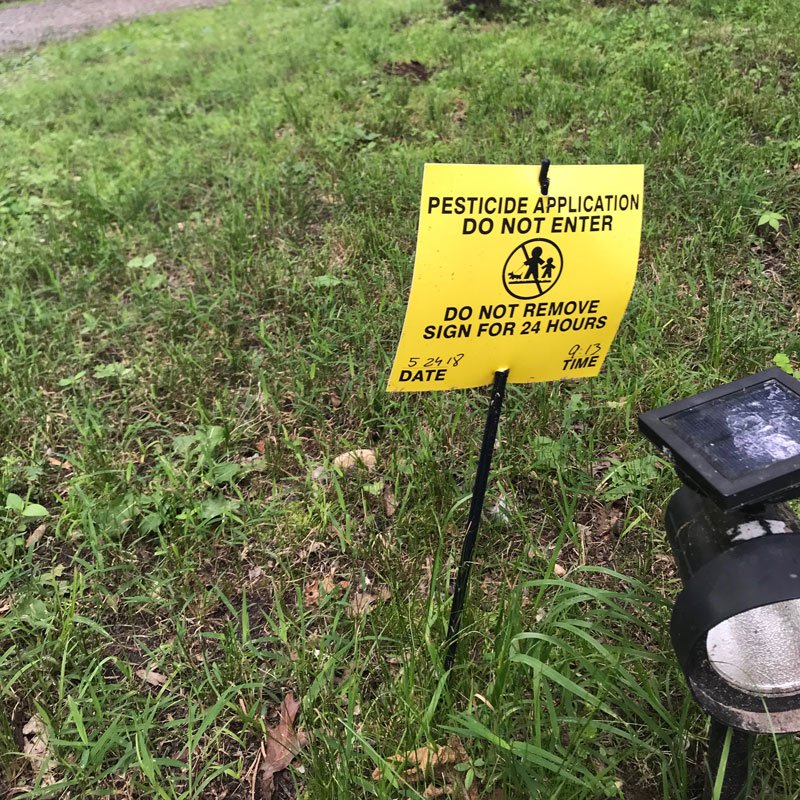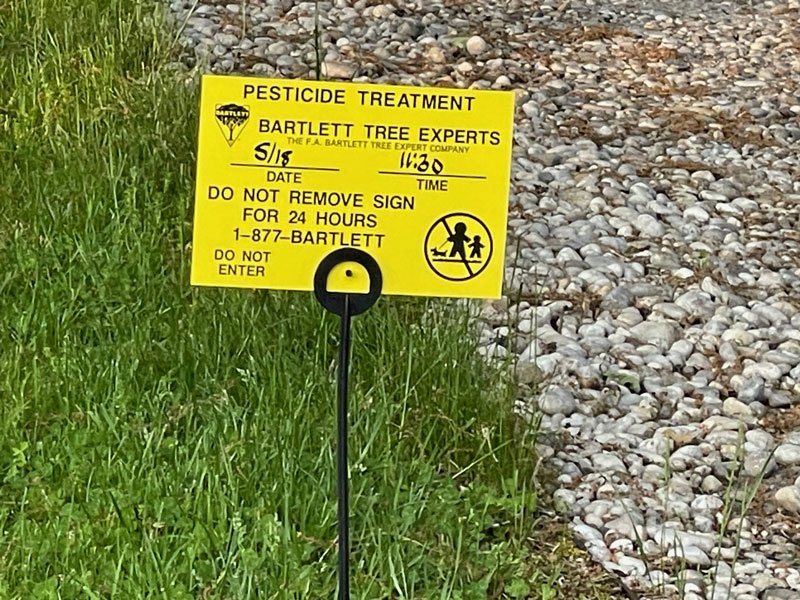Best Practices Lawn and Garden Care
Ahh, Spring…that time of year when these yellow pesticide signs pop up all over our area and often litter the roadsides with plastic debris. “Overuse of fertilizers and pesticides are creating toxic conditions that hurt animals and marine life, but natural landscaping techniques have been slow to catch on with homeowners…” - Read or listen to WSJ article, “Chemically Crafted Lawns Are Harming the Hamptons. Alternatives Have Been a Tough Sell.”
Maintaining a healthy lawn doesn’t have to come at the cost of the health of our bays, drinking water, our family and pets.
Reducing or eliminating fertilizer use, especially those high in nitrogen, can make a significant difference.
Consider planting native vegetation, which requires less maintenance and provides natural benefits to the watershed.
Make sure your landscaper is following best practices!
Attend Peconic Land Trust’s FREE organic landscape advice. “Since 2014, lawn and landscape professional Paul Wagner of Greener Pastures Organics has provided organic landscape advice weekly to homeowners and landscape professionals at Bridge Gardens. From sustainable, low-impact practices to tips on creating and using compost to build soil health, Paul’s advice is available for free! Stop by or email Paul at LawnExpert@PeconicLandTrust.org to get your questions answered. Program in partnership with the Perfect Earth Project.
Compared to turf grass, native plants have more extensive root systems, hold soil in place, and help filter contaminants.
Potential drawbacks associated with the overuse of pesticide spraying for tick control:
Environmental Impacts:
Disruption of ecosystems: Pesticides, designed to target specific pests, can inadvertently harm beneficial insects like bees and butterflies, which are essential for pollination.
Water source contamination: Runoff and leaching can introduce pesticides into water bodies, endangering aquatic life and potentially affecting entire ecosystems.
Collateral damage to non-target organisms: Birds, amphibians, and mammals can be harmed, disrupting food chains and impacting ecosystems.
Long-term soil health degradation: Pesticides can harm beneficial soil microorganisms, reduce nutrient cycling, and disrupt the balance of soil ecosystems, impacting plant growth and agricultural productivity.
Human Health Risks:
Acute toxicity: Exposure to high doses can cause immediate symptoms like headaches, dizziness, nausea, and skin irritation. In severe cases, it can lead to seizures, loss of consciousness, and even death.
Chronic toxicity: Long-term exposure to low doses can lead to various chronic diseases, including cancers (e.g., brain, breast, prostate), neurological disorders (e.g., Parkinson's, Alzheimer's), birth defects, reproductive problems, and respiratory issues.
Vulnerability of specific groups: Children and pregnant women are especially susceptible to the toxic effects of pesticides due to their developing bodies. Farmworkers and pesticide applicators are also at higher risk due to increased exposure.
Endocrine disruption: Some pesticides mimic or block hormones, interfering with bodily functions and potentially causing reproductive problems, developmental issues, and certain cancers.
Limited Effectiveness and Development of Resistance:
Despite reducing tick abundance in treated areas, residential spraying may not significantly reduce the risk of tick encounters or tick-borne diseases in humans, likely because ticks are encountered in untreated locations.
Over-reliance on chemical pesticides can lead to the development of resistant tick populations, making control more difficult.
Alternatives to consider:
Habitat modification: Remove leaf litter, trim vegetation, and create a barrier of wood chips or gravel around the yard to discourage ticks.
Natural predators: Encourage natural predators like guinea fowl and certain bird species that feed on ticks.
Essential oils: Use diluted peppermint or lavender essential oils to repel ticks.
Diatomaceous earth: This natural powder dehydrates and kills ticks.
Integrated Pest Management (IPM): Combine multiple strategies, including habitat modification, natural predators, and selective chemical treatments when necessary, to manage tick populations effectively.
Personal protective measures: Wear protective clothing, use tick repellents, and perform tick checks after spending time outdoors.











